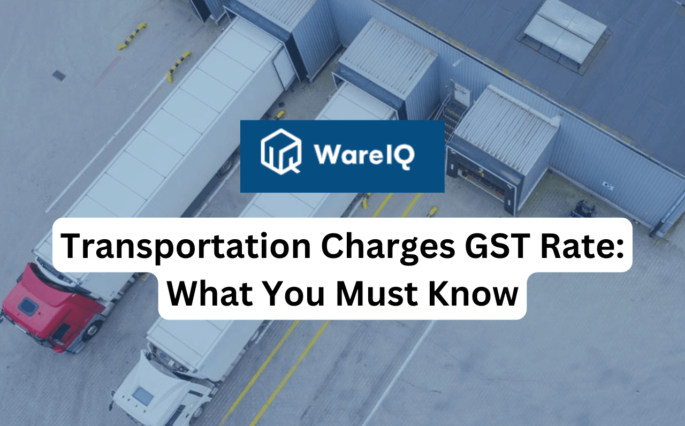The Ins and Outs of COD Remittance in E-commerce


COD is straightforward from the buyer’s standpoint. They receive the product and pay for it. For a COD delivery order, the customer pays the delivery partner with cash, a debit card, or a digital wallet. The funds are then transferred to your bank account by your logistics partner. The procedure is known as COD remittance. Unpaid COD remittance delivery orders are a major source of concern for businesses.
- Strategies for a fast COD Remittance
- Cash On Delivery vs. Cash on Advance
- Advantages of COD
- Disadvantages of COD
- FAQs
- What is COD remittance in e-commerce?
- How can businesses ensure fast COD remittance?
- Why is system integration important in COD transactions?
- What challenges can lead to late COD remittances?
- How can sellers prevent incomplete or incorrect delivery addresses from causing RTOs?
- What are the advantages of Cash on Delivery (COD)?
- What are the disadvantages of COD for businesses?
- Why is COD considered expensive for e-commerce businesses?
- How does COD contribute to financial loss for businesses?
- Why might established businesses prefer cash in advance over COD?
Strategies for a fast COD Remittance
- Uniformity in Managing Orders
Before you evaluate your shipping partner, make sure your house is in order. Small businesses are frequently disorganised. They lack order management software (OMS). Companies must manage orders consistently. First and foremost, you should have an OMS. The software should also be able to distinguish between COD Remittance and non-remitted COD delivery orders. This feature will assist you in following up on unremitted orders. Furthermore, sending non-remittance reports to your shipping partner becomes simple.
| Factors Typically Considered | Details to Discuss with Delivery Partner |
| Distance and Price | Inquire about the specific timeframe for COD remittance. |
| Areas of Operation | Understand the threshold for transferring invoice payments. |
| Variability in Remittance Protocols | Some partners offer faster remittance for a fee. |
| Duration of Fund Restriction | Clearly discuss remittance protocols before the agreement. |
| Cash on Delivery (COD) Importance | Acknowledge the significance of COD for buyer preference |
| Mitigation of Fund Restriction Concerns | Explore options to expedite remittance and associated fees. |
| Strategic Decision on COD Option | Recognize the potential impact of removing COD on buyer behaviour. |
- Transparent System Integration
Technology-driven logistics companies generate digital proofs for every step, whether it’s geo-coordinates for delivery addresses, digital signatures, or cash collected by the courier partner. All metrics should be embedded in the digital run sheets of a good delivery partner.
| Seller’s Request | Benefits of System Integration |
| Request support for system integration with ERP or order management | Track deliveries and payments with ease |
| Feature for tracking deliveries and payments collected by partner | Seamless communication between seller and logistics partner |
| Integration with ERP for post-delivery remittance follow-up | Efficient handling of pending remittances |
- Monitor late COD Remittance
Real-time tracking and analysis of RTO order remarks can assist sellers in identifying and resolving issues as soon as possible. This data set can help you identify issues and make real-time decisions. Prompt action boosts the conversion rate of COD remittances.
Possible Reasons:
- Delayed delivery of the shipment
- High number of orders with RTO (return to origin) status
- Changes in remittance protocols
- Lack of awareness about deposit deadlines
- Inefficient handling of RTO orders
- Relevant Consumer Information
Following that, make sure the customer is available at the door during their time slot and notify your courier company. If the customer is unavailable, the likelihood of rejection remains higher for a COD remittance delivery order. Remember that timely COD remittance is dependent on successful deliveries.
| Challenges Leading to RTOs | Seller’s Action for Prevention |
| Incomplete or incorrect delivery address | Double-check the address, landmark, and contact details |
| Impact on the delivery process, especially in tier 2 and 3 cities | Ensure accuracy for the seamless delivery process |
Cash On Delivery vs. Cash on Advance
| Cash on Delivery (COD) | Cash in Advance (CIA) |
| Buyer pays upon receiving the goods. | Buyer pays for the goods or services before delivery. |
| Goods are shipped before payment is made. | Seller requires entire payment upfront before shipping. |
| Benefits for both the buyer and the seller. | Used to eliminate credit risk for the seller. |
| Risk of delayed or damaged goods for the buyer. | The seller is protected from shipping goods without payment. |
| Common in various business scenarios. | Most common in online marketplaces, e-commerce, and international trade. |
| Provides flexibility but involves some risk. | Reduces credit risk but may affect buyer satisfaction if goods are not as expected. |
Advantages of COD
- Immediate COD
In-person COD facilitates the immediate payment of goods and services for many businesses. This is a significant accounting advantage because it can significantly reduce a company’s days receivable.
- Shorter Delivery Time
COD delivery times are typically shorter than standard invoicing. This is advantageous because an intermediary requires the customer to pay at the time of delivery. Customers who use COD shipping have more time to collect the funds needed to make a full payment.
- Increase Brand Recognition
Offering a COD payment option to merchants may increase consumer confidence in a new company that has not yet established strong brand recognition. In general, established businesses are unwilling to take on the risks of COD shipping, instead opting for credit payment plans that charge interest and late fees.
Disadvantages of COD
- Risk of Goods declination
The disadvantages of COD for businesses are that there is a higher risk of goods being refused upon delivery, and there are costs associated with returning items. Buyers may find it more difficult to return items if they have already paid for them at the time of delivery. Even if the consumer is dissatisfied with the goods, the seller may be hesitant or under no obligation to accept returns.
- RTO leads to Loss
COD exposes an eCommerce business to losses. This is due to the fact that when a customer orders via COD, they have the option to cancel the order or reject the shipment at the time of delivery. Such rejections, also known as return-to-origins (RTOs), result in losses for eCommerce brands.
- Expensive COD
Cash on delivery is costly. When customers place orders, they are frequently unavailable at the delivery location to accept the shipment. This necessitates multiple trips by the logistics partner to deliver the parcel. During this time, the logistics partner incurs additional fuel costs and time loss, which they charge back to the seller. Such incidents eat away at the company’s profits.
- Financial Loss
Customers pay for the product after it is delivered, so businesses run out of cash. It’s especially difficult for emerging or growing eCommerce businesses that rely on these sales to pay their monthly bills like electricity, labour salaries, and so on. Furthermore, when customers reject orders and cause RTOs, this adds to the cash crunch.
FAQs
What is COD remittance in e-commerce?
COD remittance is the process where the customer pays for a product in cash, debit card, or digital wallet upon delivery, and the funds are then transferred to the seller’s bank account by the logistics partner.
How can businesses ensure fast COD remittance?
Ensuring uniformity in managing orders, discussing remittance protocols with delivery partners, and exploring options for expedited remittance can contribute to faster COD remittance.
Why is system integration important in COD transactions?
System integration, especially with ERP or order management software, enables seamless tracking of deliveries and payments, efficient communication between sellers and logistics partners, and streamlined post-delivery remittance follow-up.
What challenges can lead to late COD remittances?
COD remittances challenges include delayed delivery, a high number of return-to-origin (RTO) orders, changes in remittance protocols, lack of awareness about deposit deadlines, and inefficient handling of RTO orders.
How can sellers prevent incomplete or incorrect delivery addresses from causing RTOs?
Sellers should double-check addresses, landmarks, and contact details to ensure accuracy, especially in tier 2 and 3 cities, to prevent loss caused by incomplete or incorrect delivery information.
What are the advantages of Cash on Delivery (COD)?
Immediate payment, shorter delivery times, and increased brand recognition, especially for new businesses, are advantages of COD in e-commerce.
What are the disadvantages of COD for businesses?
Disadvantages include a higher risk of goods refusal upon delivery, costs associated with returns, losses due to return-to-origins (RTOs), and additional expenses incurred by logistics partners.
Why is COD considered expensive for e-commerce businesses?
COD can be costly due to multiple delivery attempts, fuel costs, and time loss incurred by logistics partners when customers are unavailable at the delivery location.
How does COD contribute to financial loss for businesses?
Since customers pay after delivery, COD can lead to cash flow challenges for businesses, especially for emerging ones. Rejected orders causing RTO to further contribute to financial strain.
Why might established businesses prefer cash in advance over COD?
Established businesses may opt for cash in advance to reduce credit risk, as the buyer pays upfront before shipping. This method is common in online marketplaces, e-commerce, and international trade.








